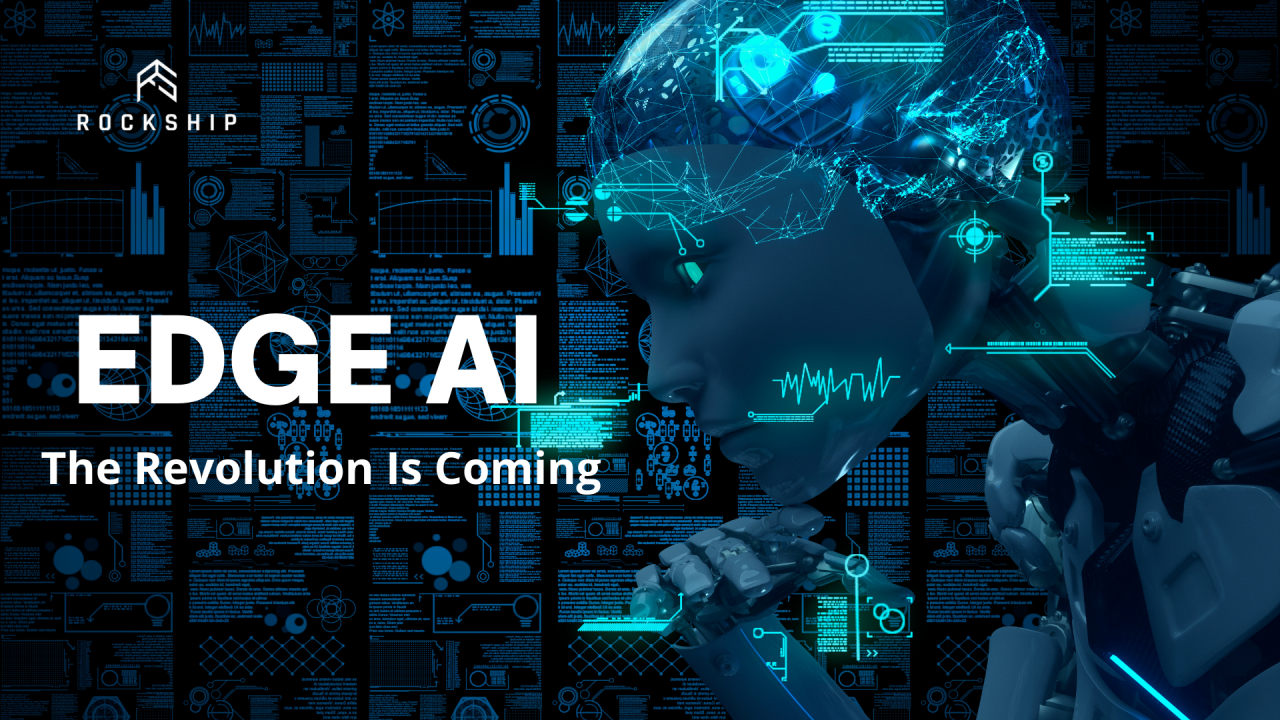While artificial intelligence and machine learning have been evolving for decades, edge AI is bringing powerful AI capabilities out of the data center and cloud - and into the devices we use every day. With advanced neural networks and algorithms running locally on edge devices, latency is reduced, privacy and security are enhanced, and AI becomes far more accessible.
Within the next few years, edge AI will enable a new wave of intelligent and autonomous systems that reshape how we live and work. Vehicles will gain the ability to navigate and operate safely without human input. Smart speakers and other voice assistants will respond with natural, personalized conversations. Industrial systems will optimize performance and detect defects in real time. Medical devices will monitor health and even diagnose conditions with a high degree of accuracy.
The edge AI revolution is coming. As an industry leader, you need to understand how it will impact your business and customers. The future is at hand, and it's time to embrace the intelligent edge.
What Is Edge AI and Why Does It Matter?
Edge AI refers to artificial intelligence that is processed locally on a device, rather than in the cloud. It allows AI to operate even with limited connectivity and reduces latency. This enables real-time AI applications on embedded systems, smartphones, and other edge devices.
The rise of edge AI will have a profound impact on both businesses and consumers. For companies, edge AI can optimize operations through predictive maintenance, improve efficiency with intelligent automation, and enhance products and services with embedded AI. This results in cost savings, improved safety, and a better customer experience.
For individuals, edge AI powers virtual assistants, real-time translation, customized fitness tracking, and more. These types of edge AI applications will become far more advanced and personalized as hardware continues to progress.
There are a few key reasons why edge AI matters:
- Reduced latency. Processing data locally avoids delays from sending data to the cloud and back. This enables real-time responsiveness for many types of edge AI applications.
- Continued operation. Edge AI systems can function even with limited or no connectivity, allowing AI to operate continuously. This is important for remote locations or sensitive systems where an Internet connection is not always available or advisable.
- Improved privacy and security. Keeping data processing on the local device addresses privacy concerns over data being sent to and stored in the cloud. It also reduces vulnerabilities from potential data breaches of cloud-based systems.
- Scalability. As the number of AI devices proliferates, edge AI will be crucial for scaling up and managing all the data and models in a sustainable way. Sending all data to the cloud is not feasible long-term.
Edge AI may still rely on the cloud for some model training, but by handling the majority of data processing locally, it is set to transform AI in the years to come. The revolution is coming, and it is happening at the edge.
Current Use Cases of Edge AI
Edge AI is already being used in various applications today to provide real-time data processing and decision making. Some current use cases of edge AI include:
Autonomous Vehicles
Self-driving cars rely on edge AI to make instant decisions based on data from sensors. The AI system must detect traffic lights, identify pedestrians, and avoid collisions with other vehicles - all with minimal latency. Processing this time-sensitive data on device rather than sending it to the cloud is critical for safety.
Smart Home Devices
Virtual assistants like Amazon Alexa and smart home products incorporate edge AI to respond quickly to voice commands. When you ask Alexa to turn on the lights or play music, the request is processed locally on the device to minimize delay. The device only sends information to the cloud when needed.
Industrial Automation
In manufacturing and robotics, edge AI powers automated systems that must operate with high speed and precision. For example, edge AI may be used in an automated assembly line to instantly detect defects or for an automated welding arm to make split-second adjustments. Sending huge amounts of sensor data to the cloud and waiting for a response would not meet the real-time requirements of such systems.
Edge AI is enabling new capabilities that were not previously possible by allowing AI to be embedded directly into devices and machines. As edge AI continues to advance, it will drive even greater automation, enhanced experiences, and new efficiencies across domains. The revolution is coming, one intelligent device at a time.
The Future of Edge AI: What's Next?
The future of edge AI looks very promising. As technology improves, edge AI will become far more advanced and integrated into nearly every aspect of our lives.
Improved Efficiency and Productivity
Edge AI will make many of our day-to-day tasks more efficient and productive. Menial chores and mundane activities will be largely automated, freeing up more of our time and mental capacity. Self-driving vehicles, intelligent personal assistants, and smart home devices are just a few examples of how edge AI can simplify our lives.
Enhanced Safety and Security
Edge AI will also greatly improve safety and security. Things like autonomous security systems, smart locks, and AI-enabled monitoring devices will make homes and public places more secure. Self-driving vehicles and advanced vehicle safety features can help reduce accidents and traffic fatalities. AI for health care can enable faster, more accurate diagnosis and treatment of diseases to save more lives.
Constant Availability
With edge AI, many services and applications will be available 24 hours a day, 7 days a week. Intelligent assistants, for example, can respond to our questions and handle basic tasks at any time of day or night. Smart home automation will keep our homes secure, comfortable and running efficiently even when we're away or sleeping. Self-driving vehicles could also provide transportation on-demand whenever needed.
The future is bright for edge AI and all the opportunities for improved efficiency, enhanced safety, increased productivity, and constant availability it will bring. While human oversight and intervention will still be necessary in many areas, edge AI has the potential to greatly augment and amplify our capabilities in ways that will make the world a better place.
Conclusion
Edge AI is poised to transform the world as we know it. The ability to run AI at the edge is providing tremendous opportunities to improve every aspect of your life. From smart devices that anticipate your needs to autonomous vehicles that safely navigate through traffic, edge AI will soon be all around you. The next major technological revolution is on the horizon. Embrace the changes edge AI will bring - smarter, more efficient and customized experiences are coming. The future is at the edge. Seize the opportunities this new era of computing will provide to improve productivity, enhance safety, and gain valuable insights. Edge AI is the revolution that is coming to make the world a little bit smarter and life a little bit easier. The future is bright at the edge.



